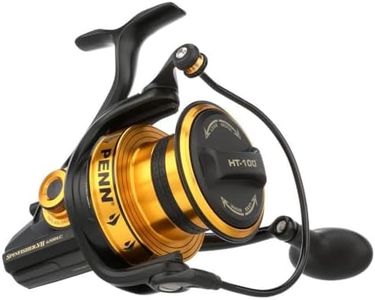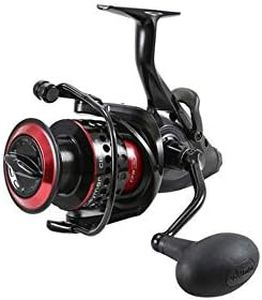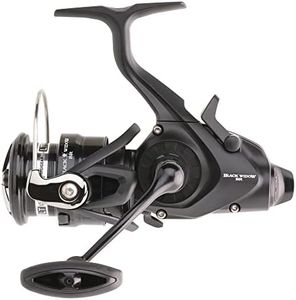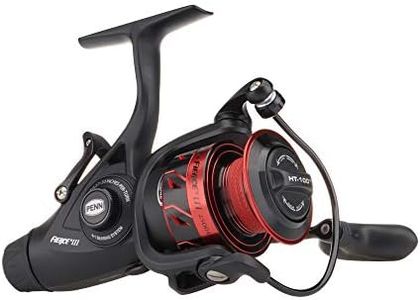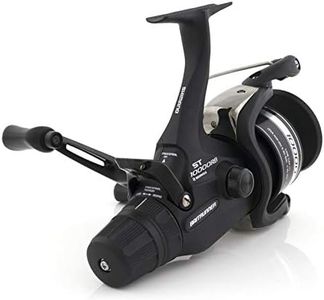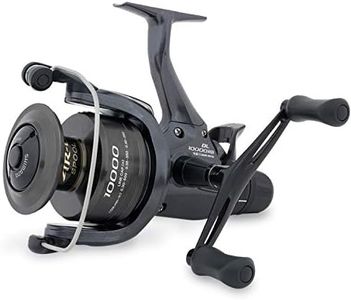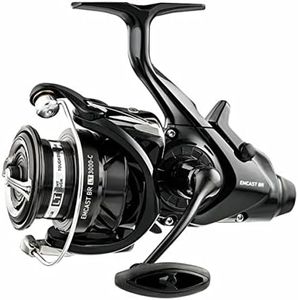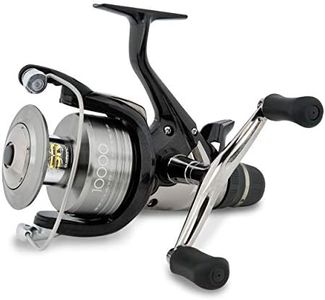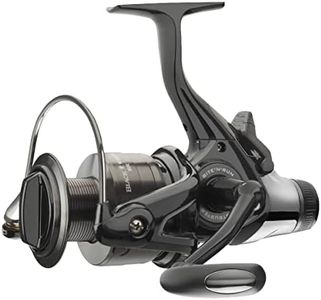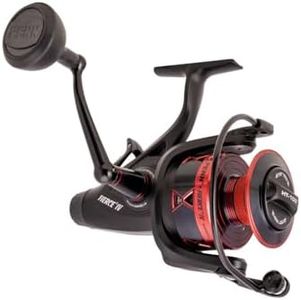We Use CookiesWe use cookies to enhance the security, performance,
functionality and for analytical and promotional activities. By continuing to browse this site you
are agreeing to our privacy policy
10 Best Baitrunner Reels
From leading brands and best sellers available on the web.Buying Guide for the Best Baitrunner Reels
Choosing the right baitrunner reel can make your fishing experiences more enjoyable and successful. Baitrunner reels, also known as freespool reels, let you fish with the bail closed and still allow a fish to take line freely, which is particularly helpful when targeting bigger, wary fish. Picking the best baitrunner reel for you depends on the type of fishing you do, the species you target, and your fishing environment. Understanding the key specifications and what they mean is essential for making a suitable choice.Reel SizeReel size describes the physical dimensions and line capacity of the baitrunner reel. This matters because it's directly related to the type and size of fish you'll be targeting. Smaller reels are suitable for light freshwater fishing and smaller species, while medium to large reels are better for big carp, pike, catfish, or even saltwater species. When navigating this spec, look for numbers (like 4000, 6000, 10000) – the higher the number, the bigger the reel and generally the more line it can hold. Think about where and how you’ll fish: choose a smaller reel for ponds or small lakes, and larger reels for rivers or when targeting powerful fish.
Line CapacityLine capacity tells you how much fishing line the spool can hold, typically listed both for monofilament and braided lines and given in lengths and pound-tests (e.g., 200m/0.30mm). This is important because you need enough line to handle long runs from strong fish, especially in open or snaggy waters. If you fish in large lakes, rivers, or go after species that make long runs, higher line capacity is advantageous. For short-range fishing in smaller waters, a lower line capacity will suffice. Match your line capacity to your fishing environment and the typical size of your target fish.
Gear RatioGear ratio tells you how many times the spool rotates with one turn of the handle, typically shown as something like 5.2:1. A higher ratio means faster line retrieval, which is good when you need to bring fish in quickly or cover more water, while a lower ratio provides more cranking power for playing large or hard-fighting fish. If you need speed for active fishing styles or quick retrieves, go for a higher gear ratio. For heavy-duty fishing or big fish, a lower ratio ensures you can handle the fight more comfortably. Consider your usual fishing style and target species to decide what suits you best.
Drag SystemThe drag system controls how easily line is pulled from the reel, which is key when a fish makes a run. Smooth, adjustable drag prevents line breakage and helps you tire out fish carefully. Drag power is usually described in maximum weight (e.g., 10kg max drag). Choose a reel with enough drag strength for your target species, but also test for smoothness: a stuttering or sticky drag can cause lost fish. If you commonly target big, hard-fighting fish, opt for a reel with a higher maximum drag and a system known for reliability and consistency.
Baitrunner/Freespool FeatureThis is the key feature of baitrunner reels – a second drag system that allows the fish to take line under very light resistance until you engage the main drag with a quick turn of the handle. The adjustability and smoothness of the baitrunner system matter: a more adjustable and reliable freespool makes bite detection easier and helps prevent lost fish. If you fish for species that are sensitive or known for fast, unpredictable runs, ensure the baitrunner system is sensitive yet strong. For general use, most modern baitrunner mechanisms work well, but check that it’s easy to operate and feels solid to you.
Weight and Build QualityThe weight of the reel and the materials used for its frame and components affect comfort, ease of use, and durability. Lighter reels are easier to handle during long days, but heavy-duty metal reels provide more strength and longevity. If you’re planning long sessions or need to hold the rod for extended periods, aim for a lighter reel, preferably with a corrosion-resistant build if you fish in harsh environments. If targeting big, hard-fighting fish or using the reel in tough conditions, a solid, robust construction should be your priority.

